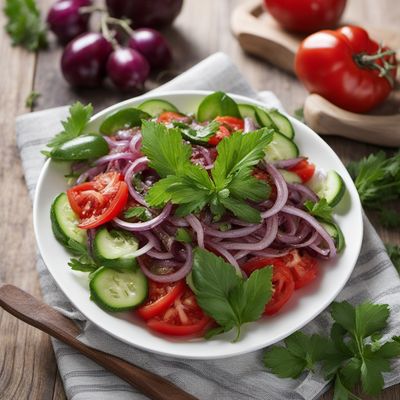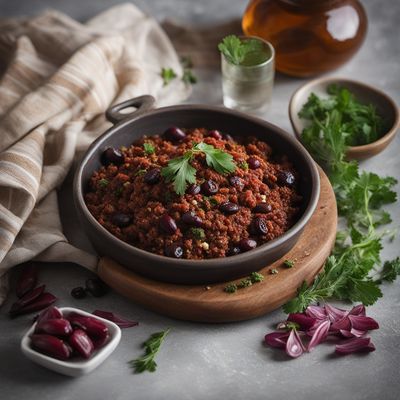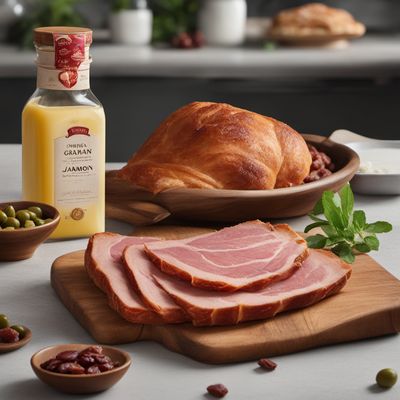
Ingredient
Table olives
The Versatile Delight: Exploring the World of Table Olives
Table olives are plump, ripe olives that have been cured and preserved in brine or oil. They have a firm texture and a range of colors, from green to black, depending on the variety and ripeness. With a slightly bitter taste, table olives offer a unique combination of flavors that can vary from mild to intensely savory.
Origins and history
Olives have a long history dating back thousands of years, originating in the Mediterranean region. They have been cultivated and enjoyed by various civilizations, including the ancient Greeks, Romans, and Egyptians. Olives hold cultural significance in Mediterranean cuisine and are often associated with health and longevity.
Nutritional information
Table olives are a good source of healthy monounsaturated fats and contain essential vitamins and minerals such as vitamin E, iron, and calcium. They are also low in calories, making them a nutritious addition to a balanced diet.
How to select
When selecting table olives, look for plump and firm olives with a vibrant color. Avoid olives that appear shriveled or have a slimy texture. Additionally, consider the desired flavor profile, as green olives tend to be milder and slightly more bitter, while black olives are richer and fruitier.
Storage recommendations
To maintain the freshness and quality of table olives, store them in airtight containers in the refrigerator. They can be kept in their brine or oil for several months, but it's important to check for any signs of spoilage before consuming.
How to produce
Table olives can be produced by curing fresh olives in brine or oil. The curing process involves removing the bitterness from the olives through methods such as water curing, brine curing, or dry curing. This can be done at home using various recipes and techniques.
Preparation tips
Before using table olives, rinse them to remove excess salt or brine. They can be enjoyed as a standalone snack, added to salads, pasta dishes, pizzas, or used as a topping for bruschetta. For a unique twist, try marinating them in herbs, spices, or citrus zest to enhance their flavor.
Culinary uses
Table olives are widely used in Mediterranean cuisine, adding depth and flavor to dishes such as Greek salads, tapenades, and pasta sauces. They can also be stuffed with various fillings like cheese, garlic, or peppers for a delightful appetizer.
Availability
Table olives are commonly available in Mediterranean countries such as Greece, Italy, Spain, and Turkey. They are also exported and can be found in specialty stores or international markets worldwide.
More ingredients from this category
Recipes using Table olives » Browse all

Greek-style Couscous with Mediterranean Flavors
Mediterranean Delight: Greek-inspired Couscous with a Twist

Pudina tal-ħobż with a Twist
Mint-infused Maltese Bread Delight

Montenegrin-style Salted Anchovy Salad
Savory Delight: Montenegrin Anchovy Salad

Catalan-style Stuffed Pasta (Bovški Krafi Adaptation)
Delicious Catalan Stuffed Pasta: A Fusion of Flavors

Macedonian Khlea with a Greek Twist
Mediterranean Delight: Macedonian Khlea with a Greek Twist

Moroccan-style Chicken Fricassee
Exotic Moroccan Chicken Fricassee: A Spicy Twist on a Classic Dish

Sicilian Caponata
Mediterranean Delight: Sicilian Caponata - A Burst of Flavors

Bocadillo de Anchoas with Tomato and Olive Tapenade
Mediterranean Delight: Anchoas Bocadillo with a Twist

Stuffed Pork Chop with Balearic Flair
Mediterranean Twist on Stuffed Pork Chop

Chiles Veracruzanos with a Twist
Spicy Stuffed Peppers: A Flavorful Twist on Chiles Veracruzanos

Aperitivo Delight
Savor the Italian Aperitivo Experience

Pan de Jamón
Savory Venezuelan Christmas Bread: Pan de Jamón